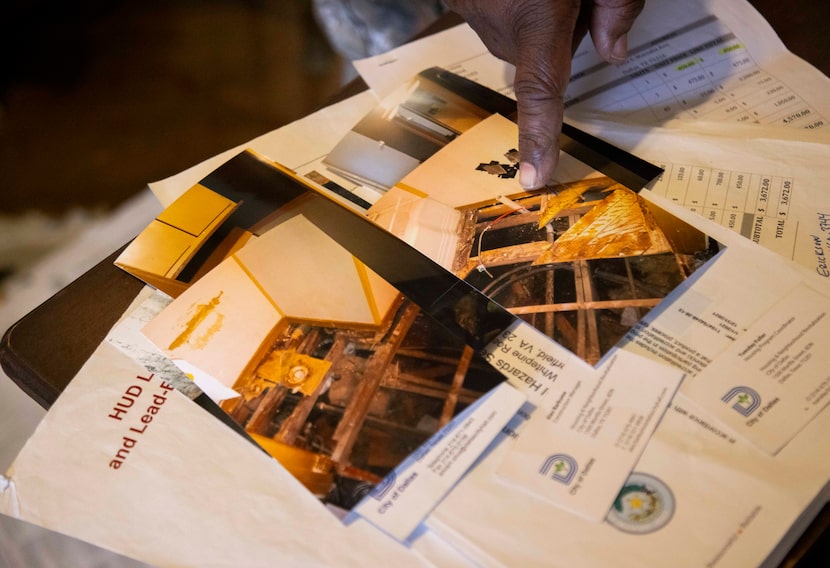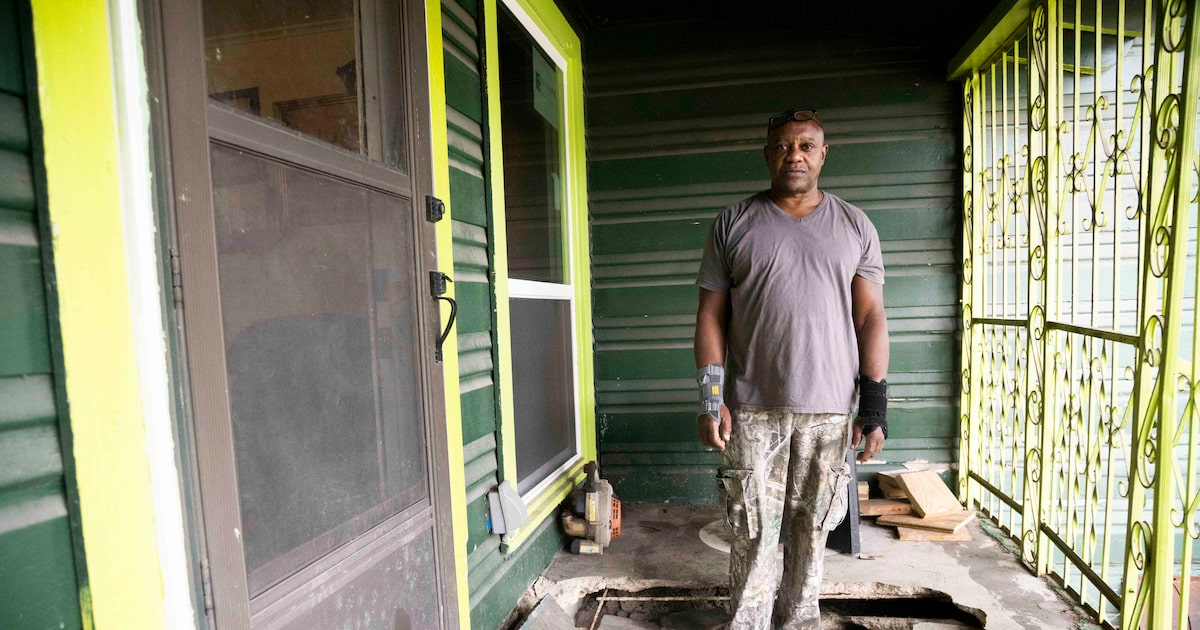An audit released on Monday raises concerns about Dallas’ overall grant monitoring process, following an investigation by The Dallas Morning News into the city’s failed lead removal program.
In September 2024, The News found only four homes received assistance through a 2019 federal grant despite more than 70 residents applying for the help and about 50 homes being inspected. City officials hoped to fix 130 houses with the grant money, but had to return most of the funds.
Related:Dallas received $2.3M to remove lead from residents’ homes. Many are still waiting
The News investigation prompted District 13 Council Member Gay Donnell Willis and District 1 Council Member Chad West to request the lead removal program be included in the Fiscal Year 2025 Audit Work Plan.
Breaking News
Some of the challenges encountered during the program’s execution included not being able to find property owners and properties that qualified, staff and leadership turnover, not maintaining a signed and executed grant agreement as required and difficulty finding certified contractors, according to the audit.
Dallas City Manager Kimberly Tolbert signed a memorandum on Monday stating the challenges mentioned in the audit led to the program’s not being as successful as intended.
“City management does not believe the auditor’s observations are high-risk,” wrote Tolbert. “However, we recognize opportunities to improve and agree to implement the auditor’s recommendations.”
The city’s auditor’s office uses ratings to evaluate the potential risks that could affect the city’s financial statements and operations. The report evaluated its findings as high-risk.
Tonya Skinner, whose home was approved for the program, never received the help she was promised.
“And now what? What are they going to do? I still have lead in my house,” Skinner said.
Tolbert and Cynthia Rogers-Ellickson, director of the Department of Housing and Community Development, did not respond to a request for comment.
Council member West was out of town and could not answer The News’ inquiry, and Council member Willis did not respond to a request for comment.
The 26-page report examined the challenges that affected program execution, how participants were informed of these challenges and delays, how Dallas executed the program compared to other cities, and which other city grant programs are lagging in implementation.
The audit also identified 19 grant programs totaling more than $68 million that were lagging in execution as of March. Besides the lead removal program, two other grant programs were closed, with most of the funding unspent.
 Loucious Miller’s points to photos of his bathroom taken when repairs were being made by the City of Dallas as he looks through documents at his home on Wednesday, Feb. 7, 2024, in Dallas. Miller, whose home was allocated nearly $12,000 for lead removal, expressed doubts that the full amount was utilized as intended. His concern extended to the health risks posed by potentially unresolved lead hazards, especially given his health conditions and the time his grandchildren spend in his home.(Juan Figueroa / Staff Photographer)
Loucious Miller’s points to photos of his bathroom taken when repairs were being made by the City of Dallas as he looks through documents at his home on Wednesday, Feb. 7, 2024, in Dallas. Miller, whose home was allocated nearly $12,000 for lead removal, expressed doubts that the full amount was utilized as intended. His concern extended to the health risks posed by potentially unresolved lead hazards, especially given his health conditions and the time his grandchildren spend in his home.(Juan Figueroa / Staff Photographer)
A federal 911 grant of $3,245,088 was terminated because supply chain disruptions during the pandemic delayed the department’s ability to purchase required equipment and zero dollars were spent, the audit says.
The other program, a $700,000 grant from the Federal Communications Commission, was closed at the agency’s request due to limited funding; only about $7,200 was used.
Failed lead removal program
The Dallas Housing and Revitalization Department won a $2.3 million federal grant in 2018 to remove lead from homes. The grant was intended to target homes built before 1978 that had children under 6 because their health is particularly vulnerable to lead exposure.
In May 2019, the grant funding became available. In August 2020, the grant funding was formally introduced to the Dallas City Council’s Quality of Life committee.
The program was closed at the end of 2023.
Related:Timeline: Learn more about Dallas’ failed lead removal program
According to a financial report submitted to the federal government last year, the city spent about $400,000 from the grant, most of which on administrative expenses, while about $1.8 million remained unused. About $42,000 was spent on home repairs and about $75,000 was spent on lead hazard and blood testing.
Challenges
When applying for the federal grant, the Dallas housing department said about 38,000 homes were eligible for lead abatement. The audit showed 101 people expressed interest in the program, 75 people applied, 56 homes were inspected and four homes were repaired.
It doesn’t mention how many of the 56 homes inspected could have received the help and how many did not qualify for the program.
Skinner’s home in southern Dallas is one of those 56 inspected homes. In October 2021, she had her two grandchildren and her home tested for lead. The grandchildren’s lead blood levels were too low, some areas of the house tested positive for high lead levels.
For almost two years, she did not hear back from the city about when they would work on her house.
Skinner moved all her belongings out of her bedroom and living room, as the city inspector told her to. She kept calling the housing department for updates on the program and asking when contractors would come to her home and begin the lead removal.
In November 2023, she received a letter from the city. The letter, shared with The News, said her application had been canceled, and the program was closed due to a shortage of certified lead contractors.
“I waited almost two years, and nothing happened,” Skinner said. “At least now they [the city] are admitting that they didn’t do right.”
Skinner said she will be looking for another city program to remove lead, but is discouraged that she will need to go through the process again and is not sure if the city will deliver.
Related:Dallas’ homelessness response needs clearer goals, audit says
The audit noted the city had difficulties finding certified contractors. In Dallas County, there were 11 certified lead abatement workers and five certified lead abatement supervisors.
Four of five peer cities surveyed also struggled to find qualified contractors to complete the repairs.
The News reported on how other cities executed their programs. Waco, a first-time lead removal recipient like Dallas, completed 36 homes and used contractors from the Dallas-Fort Worth area.
Another challenge mentioned in the report was that most houses built before 1978 required more extensive repairs.
The audit says the city partnered with a certified lead abatement contractor with prior grant experience from another city. The contractor communicated to Dallas administrators that they could not perform lead abatement work on Dallas homes without addressing other damage to the properties.
Zabrina Chism, 54, shows a text message she sent to city of Dallas staff after work with the city’s Healthy Homes and Lead Abatement program was not completed, Tuesday, Feb. 13, 2024, in Dallas.(Elías Valverde II / Staff Photographer)
The contractor did not want to fix the lead in the window sills and door frames without restoring holes in the floors that were unrelated to lead.
Communication with the city council members was inconsistent and unclear, the report says. The challenges the city staff was encountering, such as staff reductions and unmet performance targets, were not communicated promptly.
Committee requests later led to discussions about the program challenges and grant requirements when updates showed progress was not meeting the projections.
The city’s auditor’s office surveyed 20 of the 101 grant applicants on their overall experience, particularly communication and outreach during the program. Only 11 property owners responded.
The overall average satisfaction rating was 2.9 out of 5, with 5 representing the highest satisfaction and 1 the lowest.
The most common reasons cited for low satisfaction were the time and effort put into the process without the owner receiving the program’s benefit, or dissatisfaction with repairs performed.
The most common reasons cited for high satisfaction were that the program existed and that they could potentially receive repairs.
Despite this, seven said they would be interested in applying again for the assistance of the city of Dallas.
Zabrina Chism, 54, points to work that was left incomplete by contractors with the city of Dallas’ Healthy Homes and Lead Abatement program, Tuesday, Feb. 13, 2024, in Dallas.(Elías Valverde II / Staff Photographer)
The audit recommended that the housing department implement and strengthen its practices and procedures if it seeks this type of grant again, improving its outreach and ongoing communication with residents, potential applicants, and the city council.
The recommendations also include enhancing grant reporting to make it easier to identify grants lagging in program execution.
In the memorandum, Tolbert said the Office of Budget and Management Services adopted a new financial system and its staff have been actively engaged in developing reports designed to enhance consistent monitoring across a diverse volume of grants and granting agencies.
